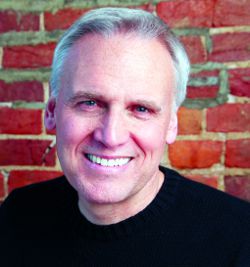 How to calculate your church’s true missional impact
How to calculate your church’s true missional impact
A friend of mine who pastors a church of 120 people in a town of 1,000 recently told me about a strange encounter he had with a megachurch pastor in another area about what constitutes a megachurch. The megachurch pastor led a church of 10,000 in a town of 600,000 and told my friend that if your church was reaching at least 1 percent of the population of your town, then you were leading a megachurch.
His assertion made my friend wonder if this was really true or was it just faulty logic. He asked this pastor how he would classify a church that was reaching 12 percent of the town’s population. The pastor was stunned.
“Who is doing that?” he asked.
“Our church is consistently running 120 people in a small town of 1,000!” my friend responded. To which the megachurch pastor quickly replied, “Yes, but that’s a different model .”
Beyond Raw Numbers
In some ways, the megachurch pastor was right. Few people would argue that pastoring 120 people is different from pastoring 12,000 people. And we’d all say that leading a church in a fast-growing suburb is significantly different from leading one in a rural community or complex downtown urban setting. So in some ways comparing the two ministry contexts is apples and oranges. They are different.
But in other ways the megachurch pastor was dead wrong. From the perspective of the people reached and actual community impact, reaching 12 percent of a small town offers a much greater result then reaching 1 percent of a larger city, regardless of the raw numbers’ magnitude.
This “percentage of impact” number might be a strategic and effective tool to help us equalize our understanding of the missional impact of a church and get away from what I think is a shortsighted idea that the only factor that really matters is how many people gather in one place at one time.
Kingdom Measurements
The “percentage of impact” number is simply the number of people attending the church compared to the number of people in the local community. When you consider this formula, a church of 120 is a significant force in a small community of 1,000. I won’t argue with the idea that a church of 12,000 is certainly impressive. But it’s much less of a force in a community of 600,000. To be equal in percentage of impact to the church of 120 in a town of 1,000, the megachurch would need to be a church of 72,000 attendees.
Right or wrong, the perception in the American church world is that, when everything is said and done, the more people you have listening to you each Sunday/weekend, the greater leader you are. This idea that quantity is always better is an American idea, not a kingdom idea. America is a great nation, but American values don’t always synch up well with kingdom values.
Kingdom is about impact, and in the kingdom, your percentage of impact number means more than how many you have in the room at the weekly worship gathering.
Other kingdom measurements that apply regardless of the size of the gathering are metrics such as:
- Ratio of baptism to attendees.
- Ratio of leaders being developed to attendees.
- Ratio of weekly conversations with lost people per member, etc.
These metrics actually tell you something about how well your church is tracking with the mission of Jesus to seek and save the lost.
When you set out to plant a new church or you’re leading an existing one, make sure you measure the things that matter. If you focus on actions and activities that increase your missional impact, you won’t have to worry about how many people show up to hear you speak. The crowd will increase as you stay focused on the mission of Jesus.
Steve Pike serves as national director for the Church Multiplication Network, which collaborates with church multipliers to effectively equip, strategically fund and innovatively network new faith communities in America. Follow him on Twitter @StevenPike.
Get Spirit-filled content delivered right to your inbox! Click here to subscribe to our newsletter.
Dr. Steve Greene is now sharing stories, teachings, and conversations with guests who lead with love on Love Leads, a new podcast. Listen now.
Dr. Mark Rutland's
National Institute of Christian Leadership (NICL)
The NICL is one of the top leadership training programs in the U.S. taught by Dr. Mark Rutland. If you're the type of leader that likes to have total control over every aspect of your ministry and your future success, the NICL is right for you!
FREE NICL MINI-COURSE - Enroll for 3-hours of training from Dr. Rutland's full leadership course. Experience the NICL and decide if this training is right for you and your team.
Do you feel stuck? Do you feel like you’re not growing? Do you need help from an expert in leadership? There is no other leadership training like the NICL. Gain the leadership skills and confidence you need to lead your church, business or ministry. Get ready to accomplish all of your God-given dreams. CLICK HERE for NICL training dates and details.The NICL Online is an option for any leader with time or schedule constraints. It's also for leaders who want to expedite their training to receive advanced standing for Master Level credit hours. Work through Dr. Rutland's full training from the comfort of your home or ministry at your pace. Learn more about NICL Online. Learn more about NICL Online.


